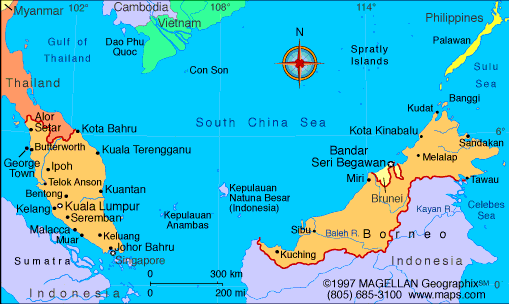
The 13+ hour flight time across 8 time zones created an intense feeling of unreality as I struggled down the long corridors of the enormous international terminal at Kuala Lumpur, the 23rd busiest airport in the world, to find my way to the domestic terminal for the next leg of the journey on to Sandakan in Sabah at the far north-eastern end of the vast island of Borneo. I found the right gate eventually and waited in a fitful state for the connecting 3 hour flight which offered glimpses down to the silvery South China Sea and to the thickly forested wilds of Sarawak. The runway we landed on, in contrast to KL airport, was built by prisoners of war and forced local labour squads during the Japanese occupation in WW2.
Our group of fellow travelers for this Exodus tour met up finally at the baggage reclaim area and soon we were shepherded into a bus and speeding over bumpy roads towards our hotel, the Borneo Sepilok Rainforest Resort. Although it was late in the day I was thrilled to see the dense, luxuriant growth of tropical vegetation by the roadside. The hotel had pineapples ripening along the pathway to our little wood chalets as well as glorious royal fan palms. While we were dining bats flew in and out of the large and high open barn-like canopy as we listened to a local chorus singing Christmas carols. There is no escape!


Monday 11 December Sepilok
Our first full day was all about the wonderful natural world all around us at Sepilok. The resort came into being to enable visitors like us to see the work of the Sepilok Orang Utan Sanctuary which is right alongside in amongst the towering trees of the dense forests standing like the columns of a great growing cathedral. Many of these wonderful and endangered creatures have to be rescued from the wild as more and more of the environment which supports them is destroyed to make way for the vast palm oil plantations which now take over an ever-increasing acreage of Borneo. They are brought here and given medical care and nurture according to need and food is put out for them but they are encouraged to learn the skills they need for living independently in the forests all around.

We watched the orang utan playing. They handle themselves with more dignity moving around more ponderously than the mischievous macaques with whom they have to share the hospitality offered to them by the sanctuary.
Later we visited the neighbouring Sun Bear Conservation Centre to watch these smallest of all ursines. They get their name from the golden yellow streak across their breast where a napkin might be at the proverbial teddy bears’ picnic. Wong Siew Te, who established the centre, explained to us that many of these sweet looking animals are taken into captivity as pets and have their claws removed rendering them helpless and so there is a vital need for this centre to look after these traumatised individuals.

I slept in my quiet wood chalet for a nice siesta and our guide Beverley had to rattle my door to wake me in time for the night walk along a great the great canopy walkway to listen to and watch the rainforest in the dark.
Tuesday 12/Weds 13 December Kinabatangan River
We had a 3 hour journey to our next resting point over deeply rutted, bumpy roads often stuck behind slow moving HGVs. The area around Sepilok is a natural park but when we got further away more and more of the landscape was taken up by vast palm oil plantations as far as the eye could see. However the journey was worth every bump and lungful of diesel fumes because we had arrived at a place of real enchantment by the large Kinabatangan River.


I was thrilled to be in this little stilted establishment raised above the muddy river flood plain for the next couple of days. We had a couple of thunderous downpours during our stay with darkened skies and great streaks of rain jetting to the ground. At night there was a wonderful feeling of comfort lying in bed listening to the rain lashing on the corrugated roof of the little wood chalets we were sleeping in. Another diversion was watching the local clan of macaques, nature’s jesters, at play or engaging in mutual grooming. We each even planted a symbolic single ficus by the river to shore up the flood defences. We had three separate excursions on the great river which is the longest in Sabah, flowing down from the heights of Mt Kinabalu and out into the Sulu Sea. We saw hornbills, elegant egrets, crocodiles wallowing on the deep mudbanks, numerous macaques, langurs and proboscis monkeys, kingfishers, a happy wild elephant grazing and even had a momentary glimpse of an orang utan in the wild standing proud high up in the forest canopy. The boat journeys offered moments of transcendent beauty at the end of the day.

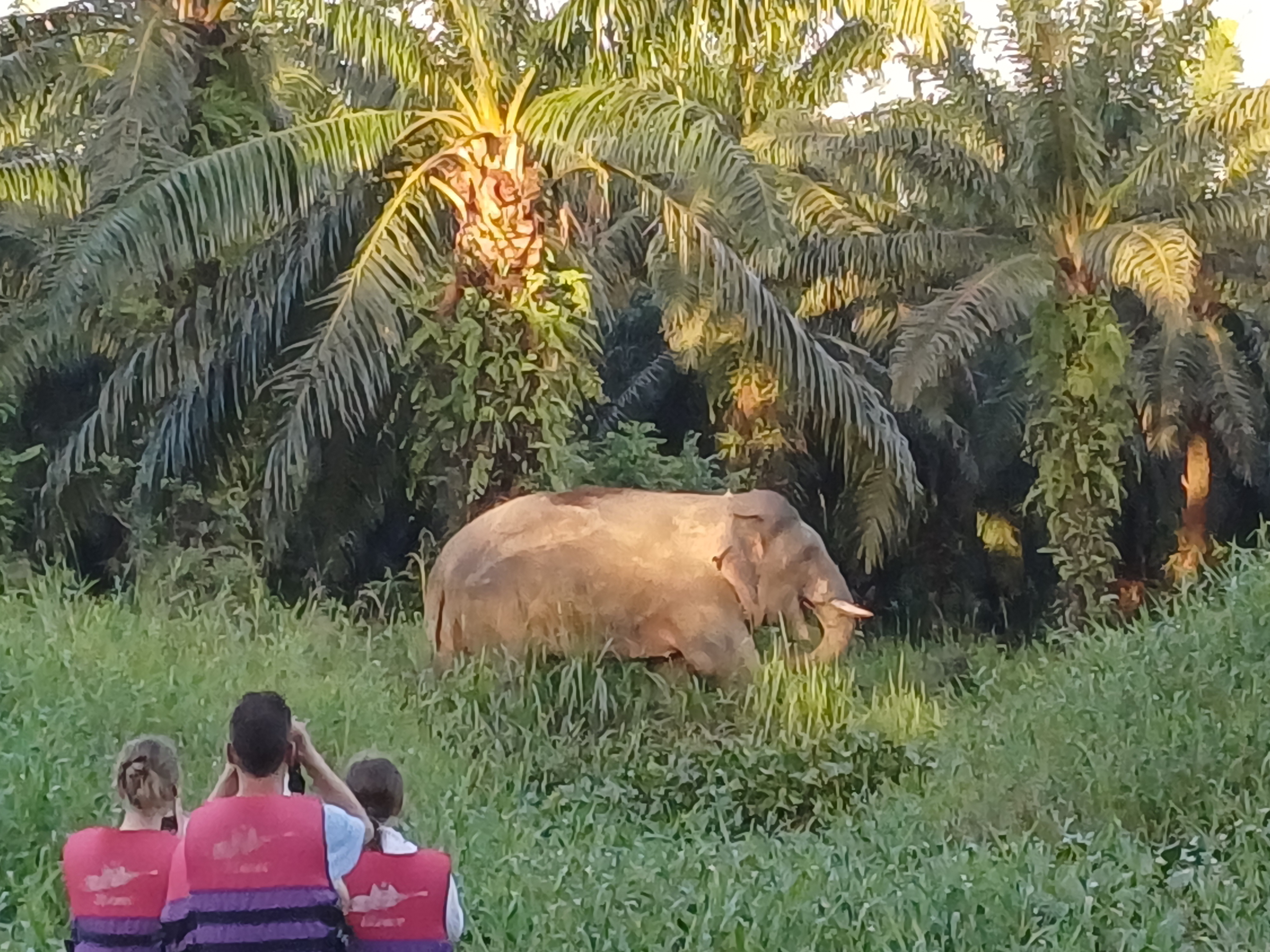

Thursday 14 December Kinabatangan River to Sandakan
We moved on for the long journey retracing our steps to Sandakan, one of the main regional centres for Sabah. We stopped at the War Memorial Park at Mile 8 outside the city. This has been created on the site of what was a Prisoner of War camp for Australian and British troops. Some rusting WW2 equipment stood amongst the exuberant tropical growth and it is hard, in what now has the appearance of a gorgeous botanical garden, to envisage the suffering of the starving prisoners. Hundreds died when they were forced to go on a Death march across the tough terrain to the other side of Sabah. Somehow the luxuriant growth that has taken over this site of suffering has given a sense of hope to this memorial.
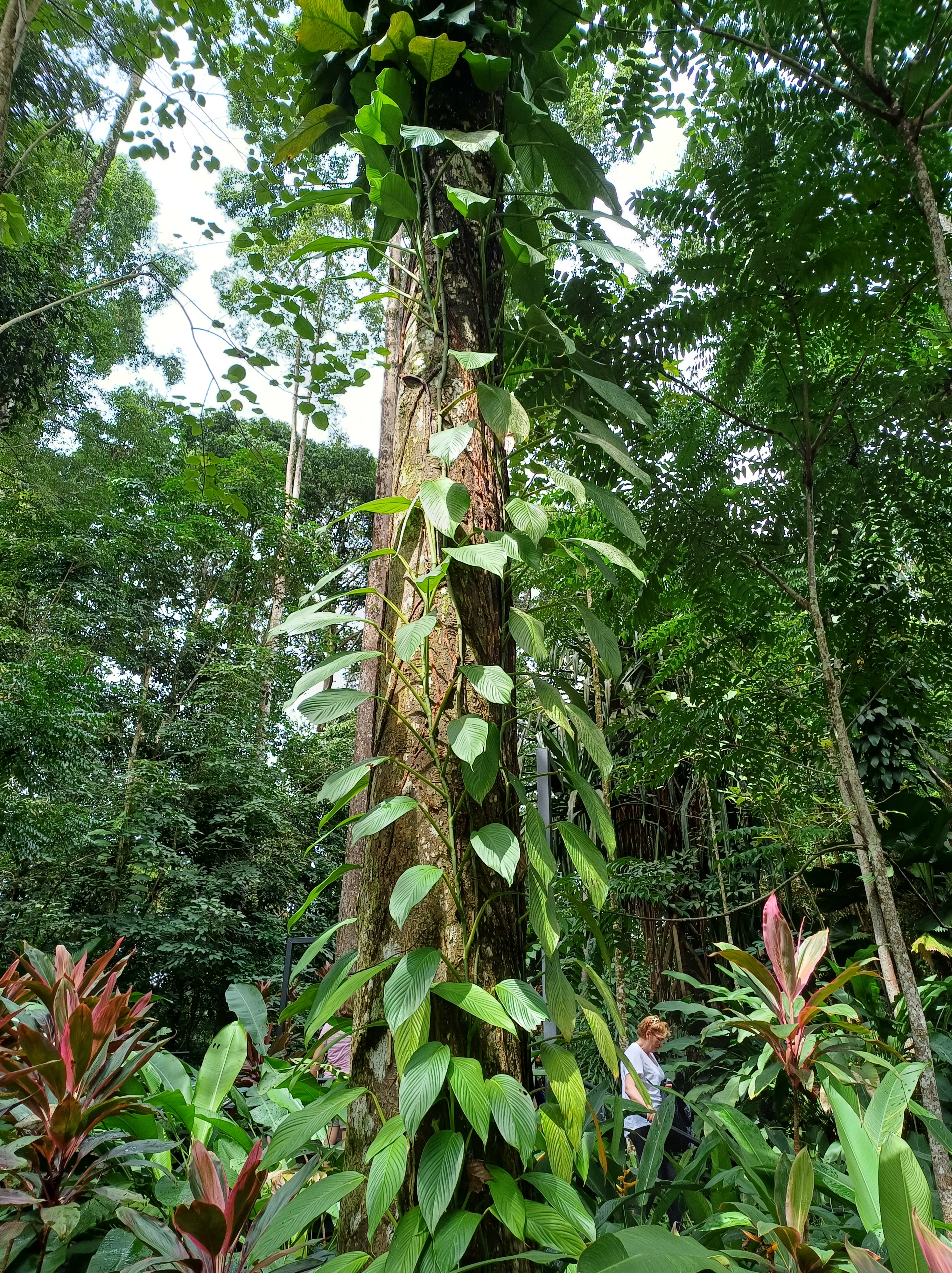
We moved on to establish ourselves in an extremely comfortable hotel in town and spent the evening in the Ba Lin restaurant at the top of a tower in the old town of Sandakan drinking exquisite cocktails. Before the deluge came down I managed to climb onto the roof to take some photos looking out at the Sulu Sea. Soon water was flowing down the walls and trickling across the floor but the show continued undaunted. The Philippines are not far and their government is in dispute with Malaysia over some offshore islands . This place is so far east, a place which conjures up images of spice traders of old, part of an exotic world so far from home full of renegade sailors and hard-drinking Conradian types!
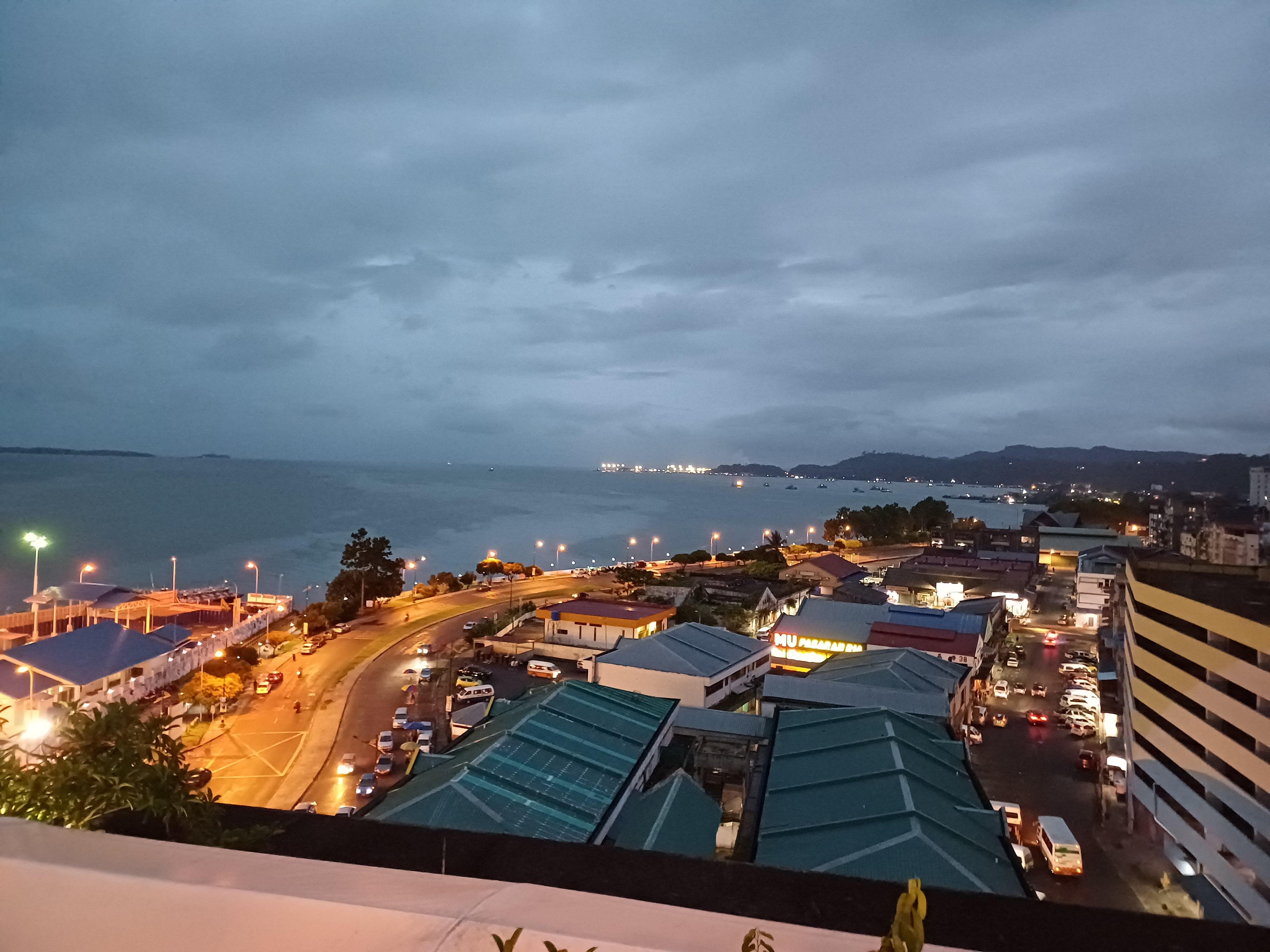
This was the view from my bedroom the following morning after the downpour of the previous night. The rain creates these magnificent natural wonders.

Friday 15 December to West Malaysia/ Saturday 16 December in Melaka
After an early start for the flight back to Kuala Lumpur we meet our new guide Api Zain at the domestic terminal. We have lunch in the huge food hall there. I enjoyed my first fresh coconut. We piled into another coach to take us on the 2 – 3 hour journey to the historic town of Melaka. In contrast to Sabah the highway was super smooth but very busy particularly as the immense volume of traffic slowed down during another torrential monsoon downpour. Melaka was once the centre of a great trading empire across both sides of the narrow seas which divide the Malay peninsula from Sumatra and the other East Indies. Traders came from China and Japan and across the Indian Ocean from Arabia. Its strategic position meant that it attracted the attention of the Europeans who erupted across the spice islands from the C16th onwards with successive waves of Portuguese, Dutch and finally British traders. They came to trade but soon took over control of the town. A huge fortress was constructed which was eventually demolished at the time of the wars with Napoleonic France and at the top of what was the citadel there is a chapel with memorials dating back to the time of the first European spice traders. Of course from our Eurocentric viewpoint we overlook the fact that Chinese traders had been active in huge numbers throughout this area for centuries and had themselves established communities which dominated the commerce of the town.
The spice merchants used to line up by the river and traders from all over the world came to deal with them. It was one of the most trusted markets for spices anywhere . That was until the river started to silt up and trade passed to Penang where the British established themselves in the C18th and then to Singapore. Now it has become a place for cafes and people watching though we did see a giant monitor lizard slithering upstream in the morning growing fat on the refuse of the city.

Melaka has a teeming weekend night market which draws visitors from throughout the region.

There is much fascinating urban architecture reflecting the many different traditions in Melaka’s history – Dutch, Indian and Chinese.

Stadthuis, town hall and store house for Dutch East India Company, Verenigde Oostindische Compagnie.

Sri Poyyatha Vinayagar Moorthy temple established 1781.
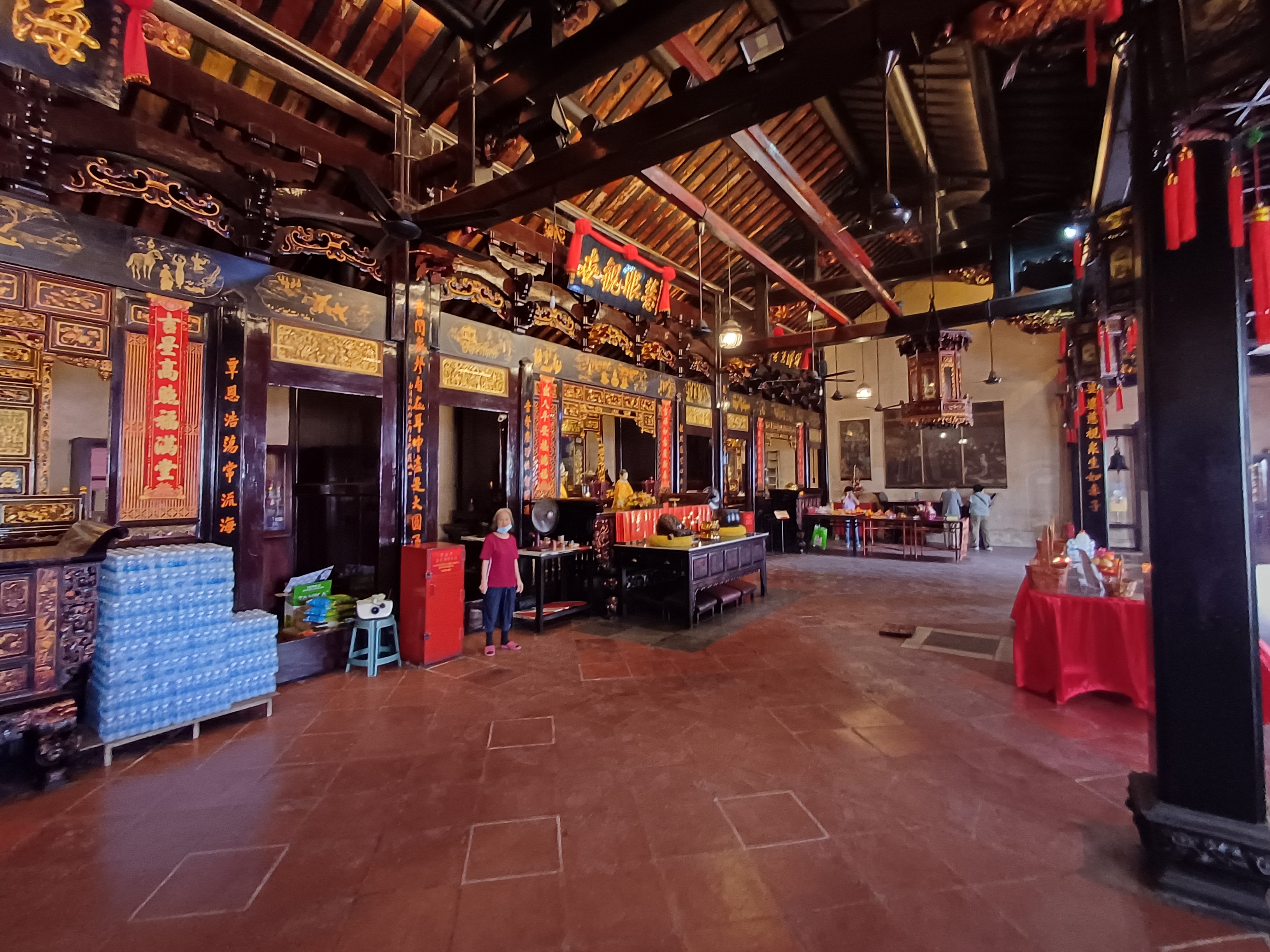
Cheng Hoon Teng temple, first built in 1673
Sunday 17 and Monday 18 December Kuala Lumpur
We made an early start and reached the edge of the vast metropolis by late morning and headed to an amazing shrine outside the city. This place is known as the Batu Caves and is a vast shrine dedicated to the Hindu deity of Mururgan, a god of war and son of Parvati and Shiva and a brother of Ganesha. The cave is high up in a limestone karst cliff and you have to climb up 272 steps to reach the shrine. It is an amazing site with swifts and bats darting about amongst the lines of faithful worshippers making their offerings and saying their prayers. Mururgan is especially revered amongst the Tamils in South India from where many came to work in Malaya. He stares out benignly towards the city.



The early start and climbing those steps earned me a substantial siesta in our comfortable city hotel after we had visited the gates of the royal palace and looked at some of the very smart guards protecting them.

Malaysia has an unusual constitution. The sultans who governed the country before colonial times retained their authority and were supported and encouraged by the British and when merdeka (independence) was achieved in the 1950s Malaysia became a federation and the sultans’ rights were guaranteed. Brunei never joined and Singapore seceded in the 1960s to become a rich, technocratic city state. The constitution rules that the sultans should take it in turns to be the head of state for the whole of Malaysia for a 5 year term. They are strictly constitutional and have to take the advice of the democratically elected cabinet. Bahasa Malay is the official language and religious freedom does seem to be a reality.
The Malaysian flag has the Crescent Moon and star (with 14 points). The star is there to reflect the religion of the majority Bumiputera (Bahasa Malaysia speaking people) population and the 14 stripes represent the 14 sultanates and other divisions that make up the country.

The early start, the long climb up to the caves and the intense heat of the afternoon earned me a good long siesta in our comfortable city hotel. I woke up in time to go for a walk with the others to look at the famous Petronas Twin Towers shimmering in the night.

The following day we went for a long and exhausting walk through the old part of the city. We walked through Little India and Chinatown, took a short ride on the smooth metro, passed through a vast colonial era covered market now converted into a bazaar for cloths, carvings and antiques. The whole morning was a bit of a blur though I do remember listening to a lucid and enlightening talk on Islam with one of the imams in the oldest mosque in the town.

Here I am outside the mosque with Caryn, one of my fellow travelers. The rest of the day was a blur. I find tropical megacities exhausting. Bangkok produced the same lethargy.
Tuesday 19 and Wednesday 20 December Kuala Lumpur to Georgetown Penang
It was a pleasure to board the fast train from KL to Penang. It took a long time to get out of the urban sprawl with rank upon rank of newly built high-rise concrete monoblocks stretching to the horizon but soon I was looking out onto the mix of luxuriant forest and palm oil cultivation. It was a 4 hour journey and always to the right there was a line of high forested mountains lost in mist. Towards the end of the journey there were views out over the deepest green rice paddy fields just bearing the fresh shoots of new rice.
We crossed the causeway that connects Penang Island to the mainland and came into another large city but this time it had the great saving grace of its maritime position. This like, Melaka and Singapore, was designated one of the Straits Settlements by the British who leased the island and its mainland shores opposite from the late C18th so there has long been a British colonial presence here.

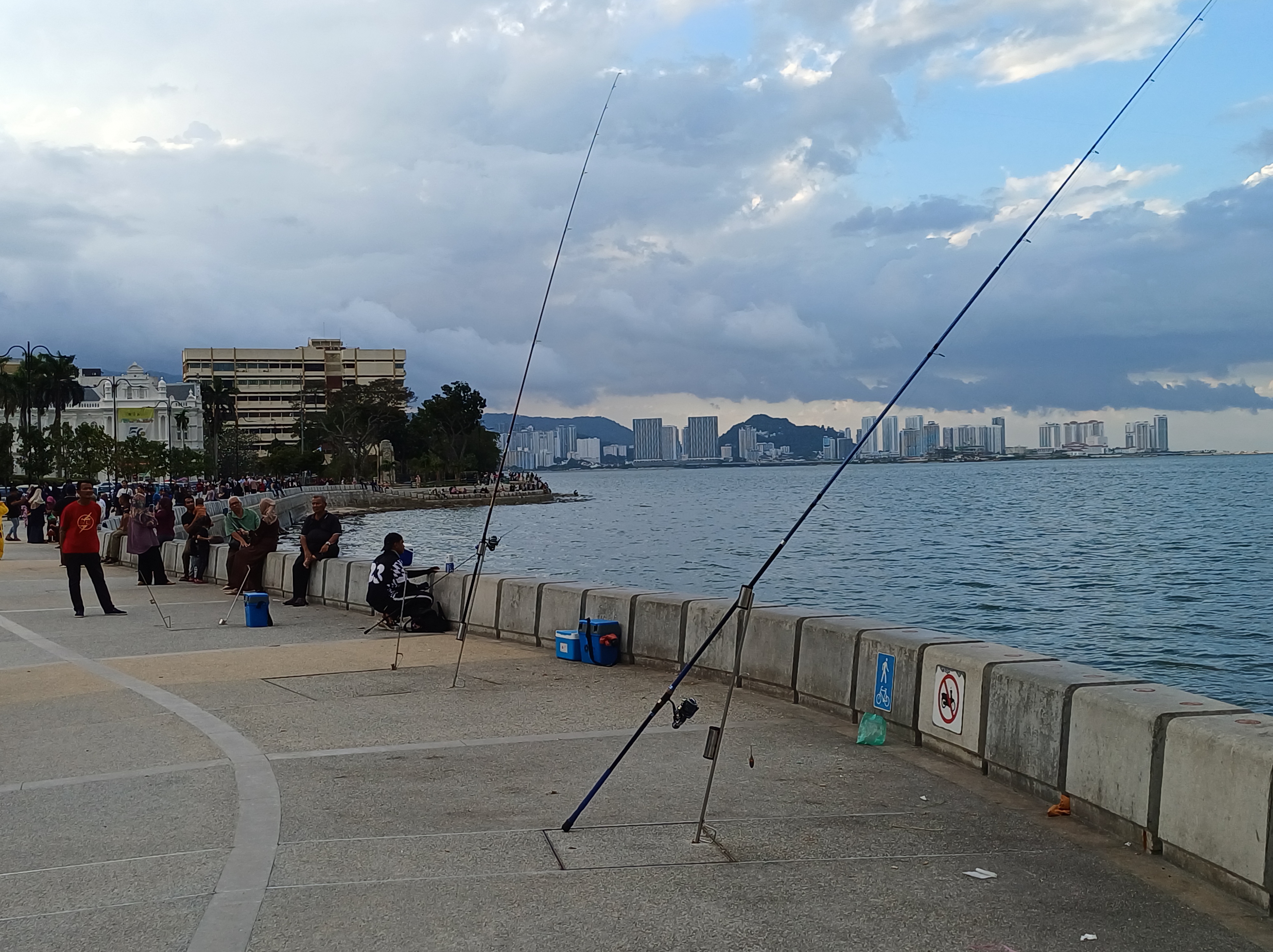
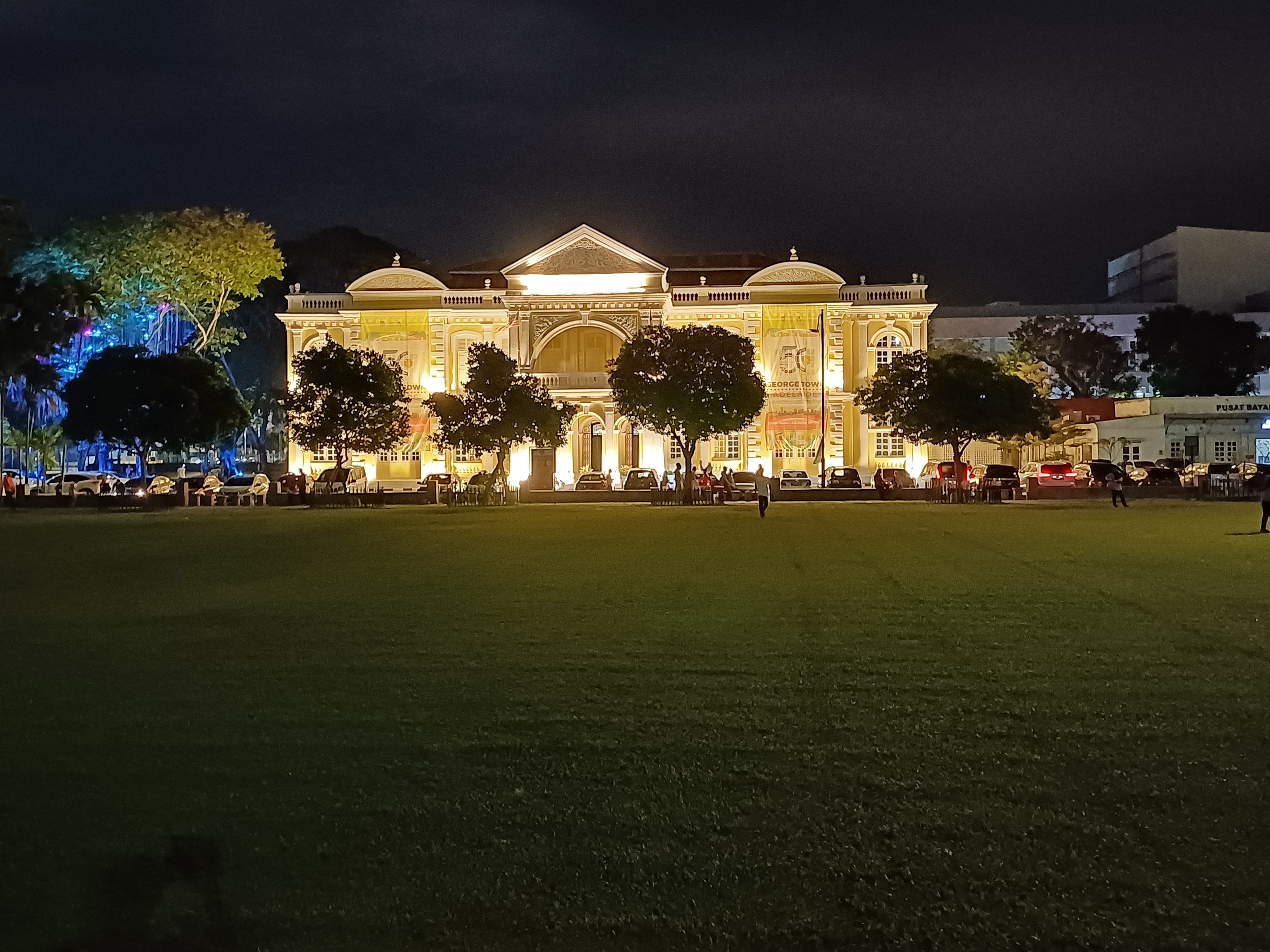
There are forts, substantial wedding cake buildings and clock towers for Victoria’s Diamond Jubilee as well a very thriving Chinese community who have established clan houses for mutual support. Many of the Chinese who settled here came from family or clan groups in the Hakka speaking area of southern China. On arrival they would get work and help with lodging from the clan house connected to the area or place they came from in China. In time these associations became wealthy and supported the education of their members and endowed magnificent, richly decorated buildings. From arriving in poverty they rose over a few generations to wealth and became pillars of society.

Khoo Kongsi temple.
The wealthiest of all was Cheong Fat Tse who built the exquisite Blue Mansion for himself and his 7th wife in the 1880s. It has 5 courtyards and numerous louvred windows and is built around a central yard which is cool and shady. The decoration is elegant throughout and ordered in strict accordance with the principles of Feng Shui. He started in Penang as a poor Hakka immigrant. He built up widespread business interests in rubber, coffee and tea and acquired a bank. He was said to be the richest man in Malaya trading across all South East Asia and was known as the Rockefeller of the east. It is suspected that some of that great wealth may have come from the lucrative opium trade which was at its height in the late C19th, a time which the Chinese remember bitterly as a century of humiliations. Several generations later the building was falling into a ruinous state and was bought from his descendants in 1989 and carefully restored. It now attracts tourists and operates as a very beautiful heritage hotel.


Thursday December 21 to Langkawi by air. On Langkawi till 26 December
We devoted a large part of the next day to the short hop over to the island of Langkawi. If I had organised the tour myself I would not have chosen to make the 25 minute flight part of the itinerary but would have taken the train and ferry to see a bit more of Malaysia. Having said that it was wonderful to arrive at a quiet and tranquil hotel with the beach a 2 minute sandy walk away. The view was sensational! This was to be the restful part of the trip and an ideal spot for early morning swimming.

The next day was spent on a boat trip through mangrove swamps of the Kilim Karst Geoforest Natural Park. This corner of the island is mostly low-lying and marshy covered with widespread mangrove forests which support a wide range of natural species on land and in the water but rising out of the low lying marshes are great limestone karsts with sheer cliffs. We saw magnificent fish eagles, innumerable macaques and even deadly snakes coiled up in the branches of the dense mangrove. We also had a wonderful fresh seafood lunch on a platform on stilts above the river. Our excursion was punctuated with a break on a lovely white sandy beach at Tanjung Rhu with a distant view of the Thai island of Koh Tarutao.
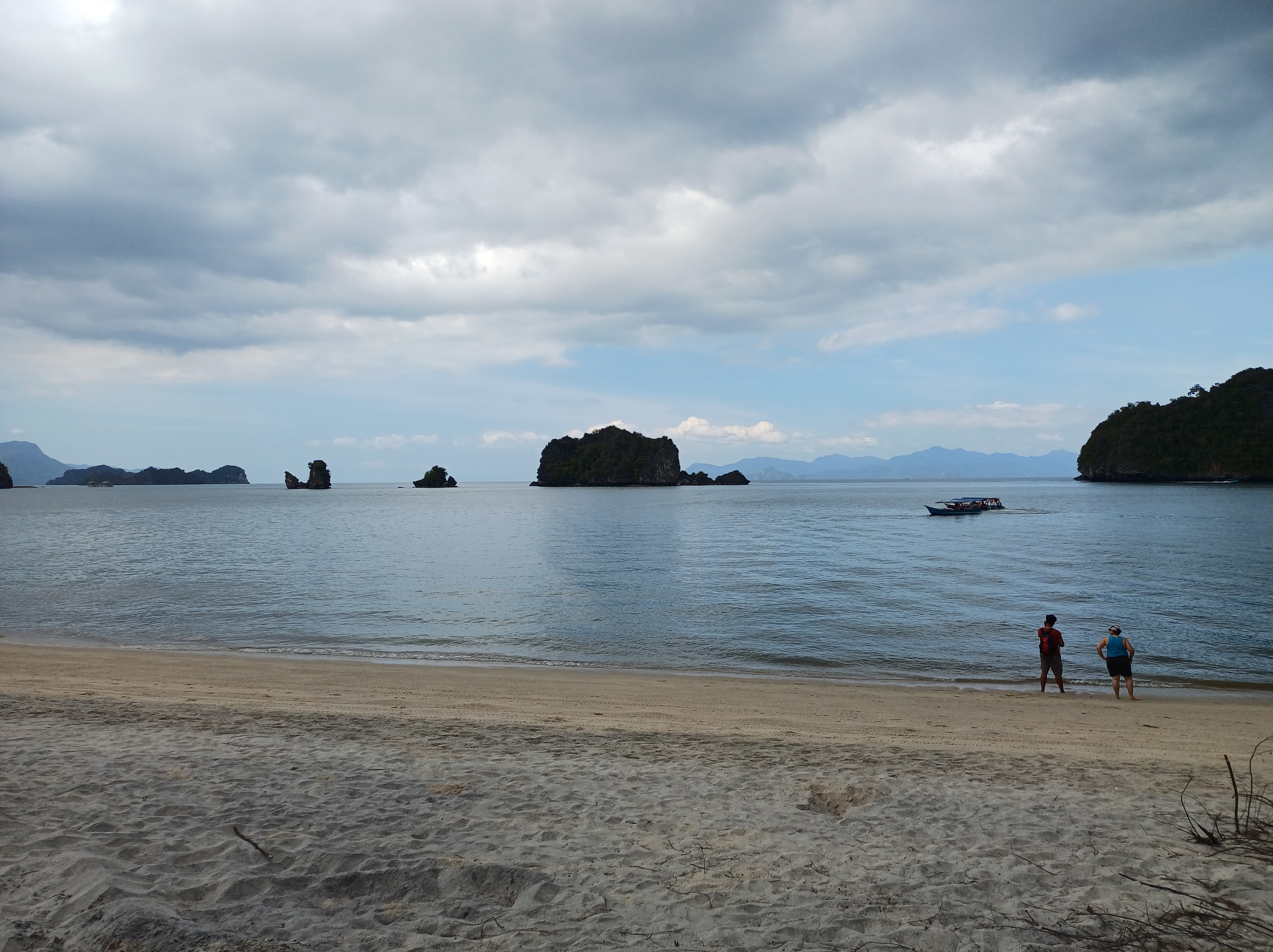


I hasten to add we did not eat these horseshoe crabs!
The next day, which was the day when the other members of the Exodus group went their separate ways, I went to the great local attraction which is the aquarium at Underwater World. It has an impressive collection of beautifully coloured tropical fish, including the wonderful Lipstick Tang with its brightly painted lips and then had a gentle day exploring the area.

The next day was the day I overcame my timidity and hired a 125 cc Honda to make my way around the island. It was the perfect way to get about and I felt utterly content scooting my way with the warm tropical air caressing my face. Providentially I had packed my poncho which proved very effective in keeping me dry through the intense downpours. I made my way at a gentle speed up towards the great range of limestone peaks visible from the beach and as I approached the clouds grew darker and rain swept through. After the rainfall soft vapourous wisps of misty steam rose out of the high canopy and hung above the dense forests on the slopes of the mountains. Perhaps these tropical forests should be called steam forests. Pure happiness to be on wheels again after 6 months!
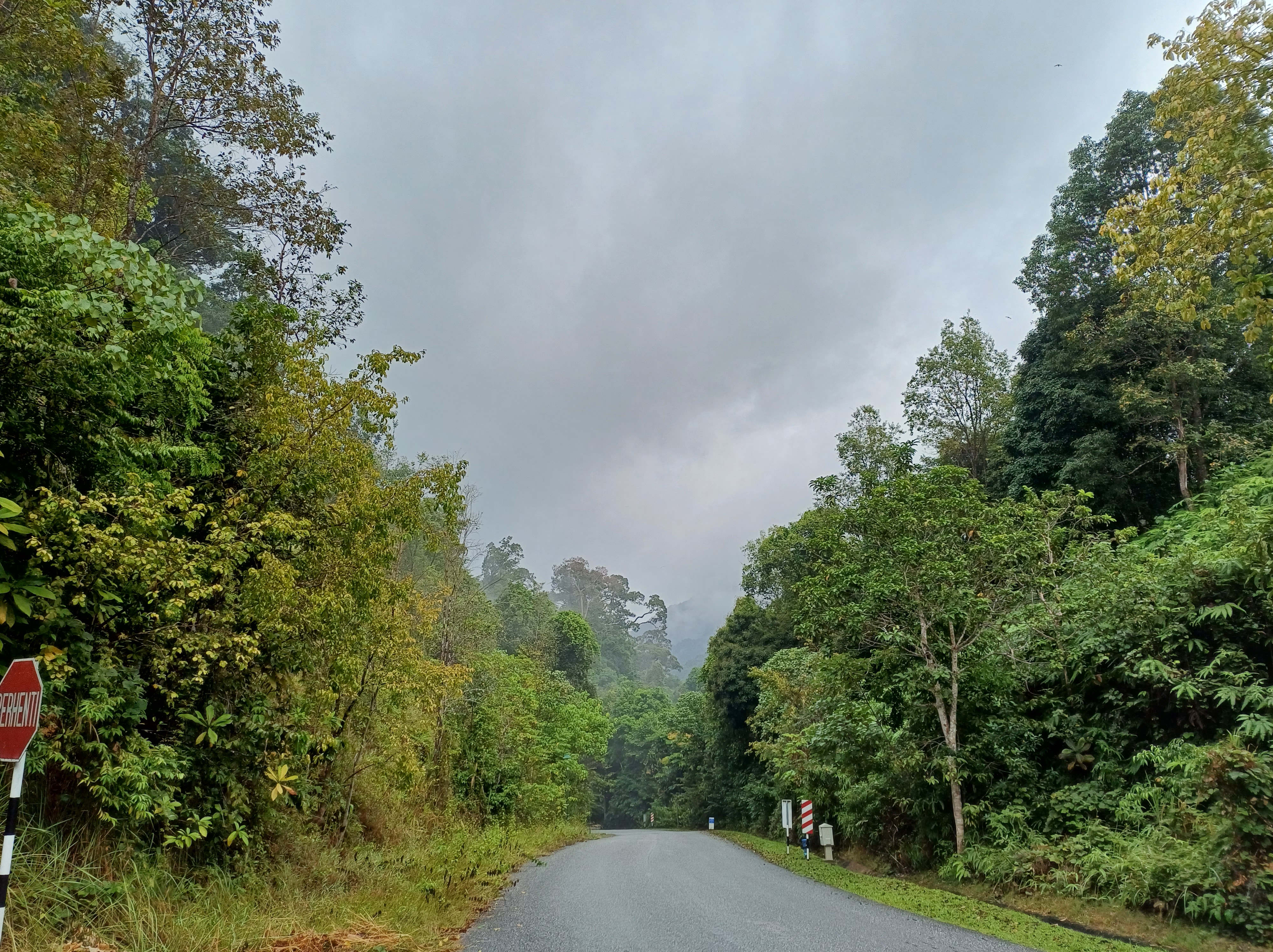
Christmas Eve lunch that day consisted of bananas and pineapple at a roadside stall next to a pineapple plantation washed down with the juice of the same fruit!


Christmas Day was spent wandering down to the next town which had a marina for island hopping excursions and a harbour where a great cruise liner was disgorging its passengers. This was the wonderful view from the harbour!

I had dinner with Caryn at a beach bar with views out towards the setting sun – a fitting end to these happy days on this lovely island!
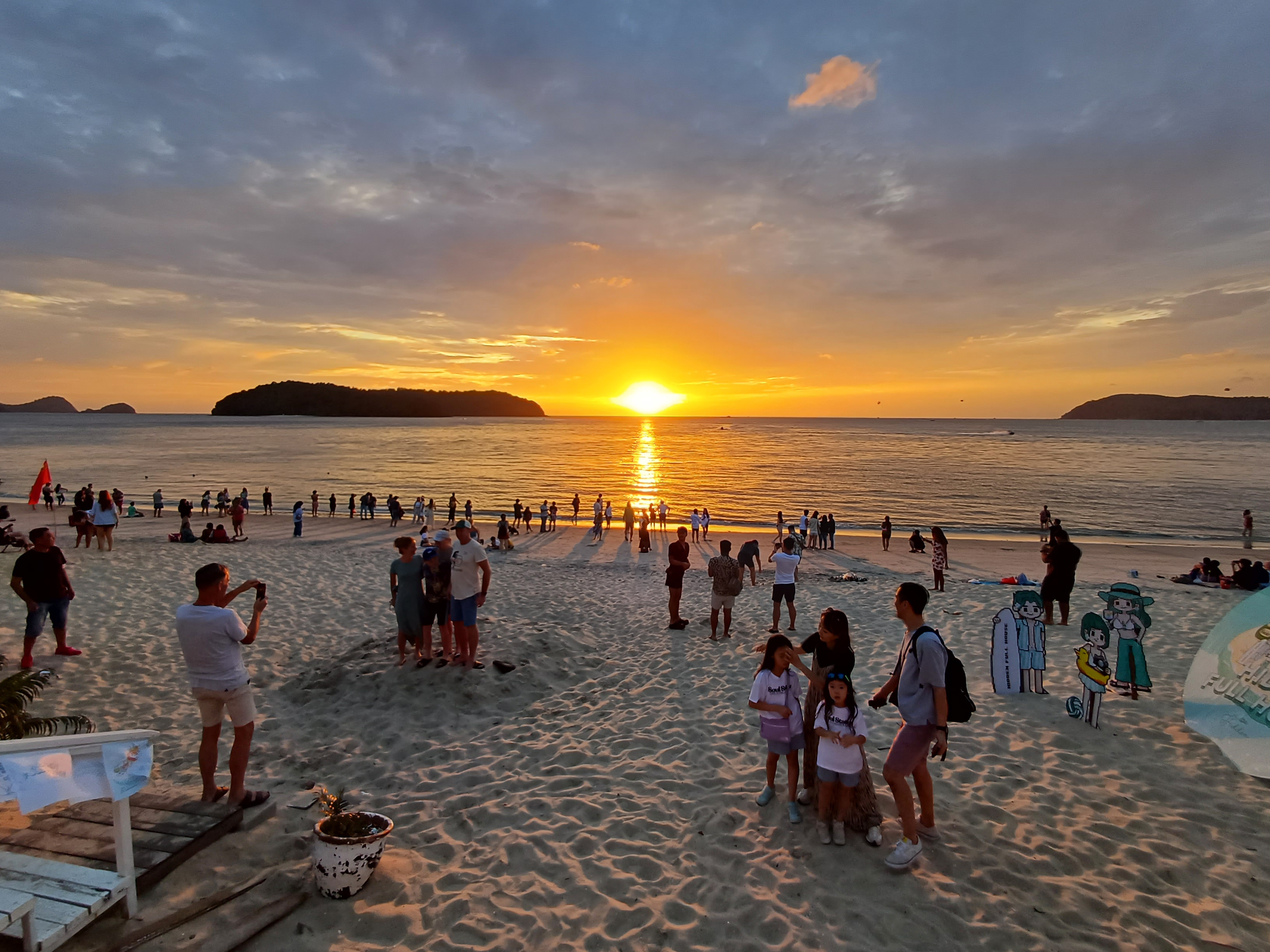

Tuesday 26 to Friday 29 December Tanah Rata in the Cameron Highlands
I woke up soon after 6.00 am and soon my taxi sped me to the terminal at Kuah from where ferries to the mainland depart. Of course I had arrived too early and had to wait for half an hour in the vast departure hall until it was time to board the high-speed hydrofoil for the 2 hour crossing to the mainland. I had packed all my clothes and soon my case was buried in a huge pile of luggage so I was unable to retrieve any further layers against the chill. I sat shivering convulsively through the journey. The air-con was switched to its lowest possible setting and could not be adjusted. I caught occasional views of ropey old fishing junks plying the waters though the porthole. I was very relieved to step onto terra firma at the port of Kuala Kedah situated on a muddy estuary on the mainland. The harbour contained rank upon rank of junks.

A taxi took me to the bus terminal at Alor Setar about 20 km inland and I was lucky to find an express bus departing immediately to speed me to Penang Sentral bus terminal. So far my leap in the dark journey was working out well so I relaxed and built up my body heat as we raced past the deep green paddy fields. Even better, when we reached Penang I was able to book one of the last seats on the next bus for the onward journey all the way to Tanah Rata. It was just as well that I had not had anything at all to eat as this final leg of the journey took several hours longer than scheduled. All was well as the great bus careered along the main highway past the city of Ipoh and then turned up into the mountains. The driver navigated like a man possessed as we twisted and turned around innumerable bends with gaping precipitous drops by the roadside and spectacular views of these highlands. As we climbed higher the air cooled but the road narrowed until soon we were trapped in a slow-moving procession for miles and miles as the road snaked through congested villages. The ride took simply ages and ages.
I noticed that the streams and rivers were the colour of milky tea suggesting that the water was carrying away a lot of topsoil and that their banks were festooned with strands of plastic and other detritus. Many of the less vertiginous hillsides were covered in plastic roofs for the hydroponic soft fruit and vegetable farms and the settlements we passed were undergoing massive construction. The development of this wonderful highland area needs to be carefully managed as its beauty could be so easily wrecked by thoughtless building and profit taking.
I breathed a huge sigh of relief when eventually, after a journey that had started 14 hours earlier, we arrived at Tanah Rata.

For the next two days I carried an umbrella and my trusty poncho whenever I was out. On the first day I took it easy just exploring the small town. It is the largest settlement in the Cameron Highlands and has a few handsome buildings dating from the colonial era and has become something of a visitor honeypot because of its cool climate. Even the new hotels that are springing up have adopted a half-timbered Tudorbethan, Surrey Hills look, taking their cue from the villas that the local tea planters and colonial officers built for themselves in the early C20th. I found a fascinating place to eat called the Barracks which was indeed a former British encampment for troops stationed here in the post-war era of the long Emergency operations against local insurgent Communists. They did not finally depart until the mid-1960s. One of Nissan huts has been converted into a museum about WW2 in Asia and has photos of the squaddies based here.


The next day I took the Mossy Forest Tour. This included a visit to a flourishing tea plantation, an excursion up into the high forest and a look around a strawberry farm. I was with 8 other people crammed into the back of a Land Rover. These are definitely the vehicle of choice in the highlands. The plantation was set up in the early C20th as family business by a Scottish tea planter and we saw the plucked leaves being sorted, dried and pulped into the finished product that makes our cuppas as they passed through machines dating from that era. The whole place now operates as a very busy attraction for visitors with opportunities for shopping and huge queues at the cafeteria.
The slopes of tea hedges around were smooth looking as though a felt sheet had been cast over them.


The wet road twisted and turned ever upward until we came to a stop at nearly 2000 metres above sea level. We walked through the mist forest up to an observation tower along a raised wooden walkway. This was an eerie and silent place and the forest had a primeval feel. At times we were above the mist but mostly within it as it cast its cool dampness over the exuberant forest growth which included some sinister insectivorous plants.



On the way back down we were rewarded with a splendid tea of scones and with lashings of freshly made jam containing huge chunks of strawberries from the hydroponic farm we went to on the tour.
Friday 29 December Back to Kuala Lumpur
Next morning I caught an early bus for the 4 hour journey back to KL. This journey was accomplished without any delays or drama. I managed to find a safe baggage deposit in the vast terminal building at Kuala Lumpur Sentral which integrates buses, trains and local metro and took myself off to spend a few hours at the National Museum which tells the story of Malaysia vividly. It is housed in an impressive 1950s building and contains many lovely artefacts from different times in this country’s long and complex history.
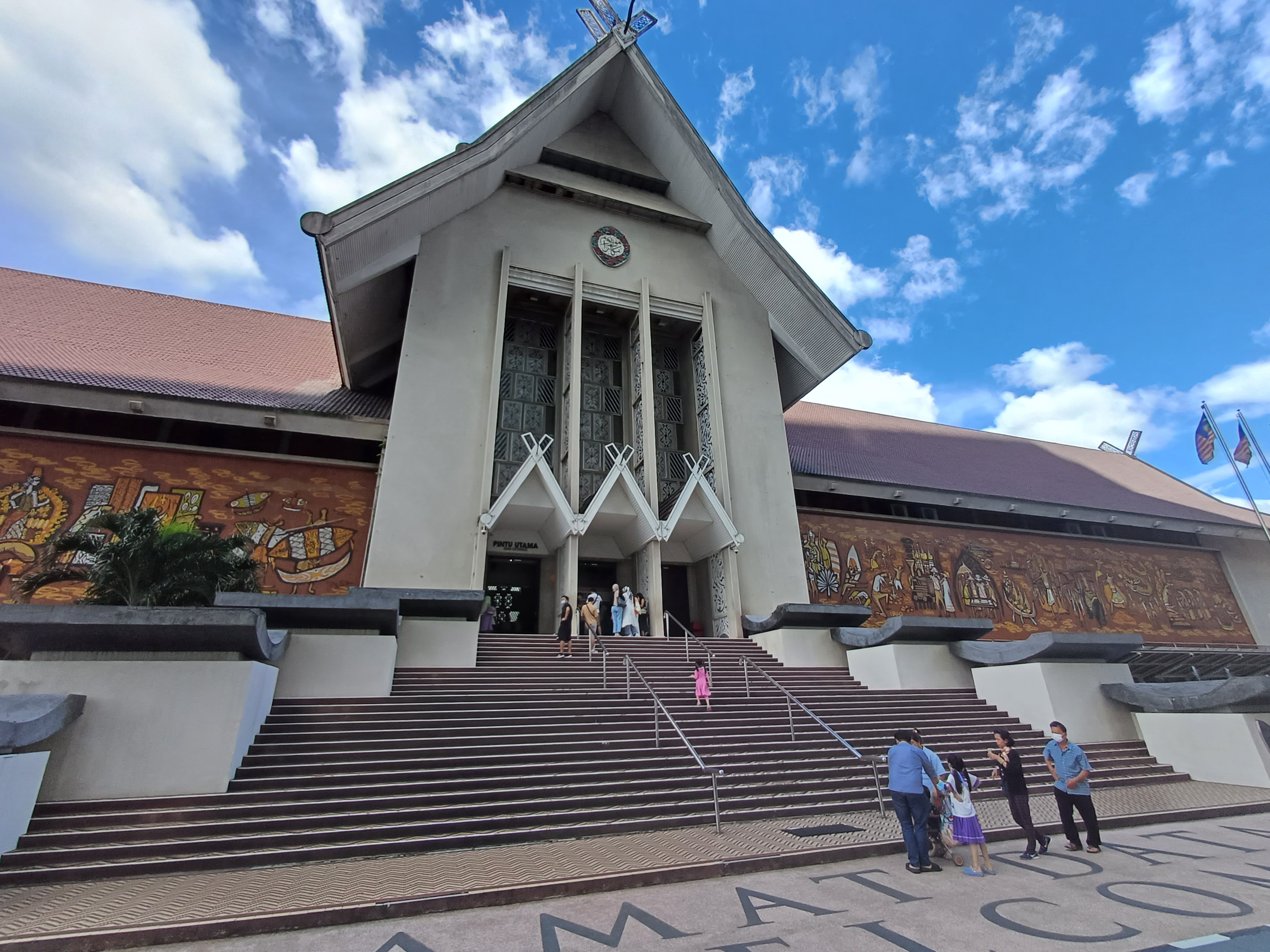

Veering on the side of caution I took the decision not to go on to the Islamic Art Museum which is said to present a stunning collection from all over the world of Islam. Instead I made my way on the high speed express out to the airport to sign in to the very comfortable Sama Sama Airport hotel. I think most of my fellow guests were airline staff but at least I was well located for my early departure on the long flight back home.
I took this shot coming in to Heathrow after 13+ hours in the air, having watched through an entire series of Young Sheldon and the Kominsky Method and read half of my book on the way!

What a fabulous journey! I enjoyed your account of the trip very much – perhaps you should submit an abbreviated version to the travel editor of the Guardian …
Good to see you’re back on two wheels again.
All the best,
Jenni
LikeLike
[…] richardcohentraveller.wordpress.com/2024/01/08/malaysia-december-2023/ […]
LikeLike